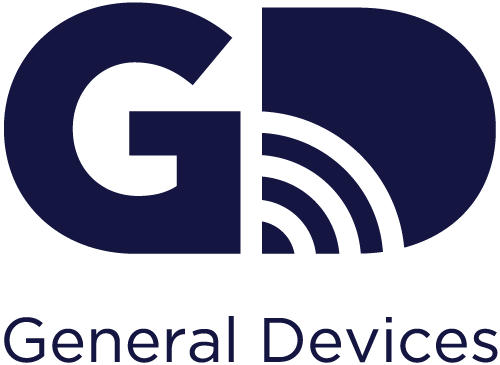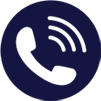Healthcare Communication Trends in 2023
Healthcare communication trends for emergency medical services (EMS) and hospital teams continue to evolve as technology advances and healthcare systems seek to improve patient care, streamline operations and enhance overall efficiency. Notable trends in healthcare communication for EMS and hospital teams range from AI and Machine Learning to patient engagement and education.
The healthcare communication trends of 2023 include:
Telehealth and Telemedicine Integration
The COVID-19 pandemic accelerated the adoption of telehealth and telemedicine in healthcare. EMS teams and hospitals are increasingly using telecommunication technologies to conduct remote consultations, triage patients, and manage non-urgent cases.
“Telehealth is here to stay,” says Christopher Lis, managing director of global healthcare intelligence at J.D. Power, which did a study on telehealth mobile app usage and satisfaction in 2023. “As overall utilization volumes normalized following the pandemic, we continue to see a clear trend toward telehealth adoption for routine care and ongoing mental health visits.”
Interoperability and Health Information Exchange
The seamless sharing of patient information between EMS and hospital teams is crucial for providing quality care. There's a growing emphasis on interoperability standards and health information exchange systems to facilitate the secure and real-time sharing of patient data across different healthcare entities. This practice can improve the speed and quality of patient care, as well as reduce costs. By one estimate, a “standardized, encoded, electronic healthcare information exchange” could save the U.S. healthcare system $337 billion over a 10-year implementation period and $78 billion per year afterwards.
Real-Time Data Sharing & Data Analytics and Reporting
EMS teams are equipping themselves with mobile devices and secure communication channels to transmit patient data, including vital signs, images, and ECGs, to hospitals in real time. This allows for more informed decisions and preparation before the patient arrives at the hospital. Emergency room communication apps and hospital internal communication apps facilitate real-time data sharing as they automatically record and report patient care data. Additionally, advanced data analytics tools help EMS and hospitals gather insights from communication data, allowing for performance improvement, resource optimization, and better patient outcomes.
Collaborative Communication Platforms & Secure Messaging Platforms
Cloud-based collaboration platforms are becoming more prevalent for healthcare team communication. These platforms can facilitate multi-disciplinary collaboration among healthcare providers. Healthcare communication platforms with end-to-end encryption and secure messaging are also being used to exchange patient information among healthcare providers, ensuring the privacy and security of sensitive data. The Global Secure Messaging in Healthcare Market is expected to grow by approximately 17.55% during the period of 2022 to 2028.
AI and Machine Learning & Simulation and Training Technologies
The use of AI in the healthcare market is predicted to expand by 37% every year from 2022 to 2030, ultimately growing from $15.1 billion in 2022 to $187.95 in 2023. Accenture estimates that 70% of healthcare workers’ tasks could be reinvented by AI. EMS and hospital teams in particular are using AI and machine learning algorithms to analyze patient data, predict patient outcomes, and assist with decision-making. These technologies can help in the early identification of high-risk patients and optimize resource allocation.
Additionally, simulation technologies, including virtual reality and augmented reality are being used for training EMS and hospital staff in various scenarios, improving communication and coordination during emergencies. "We need to train and field a new generation of EMS providers, and this is going to help us do that," Ben Zura mentioned about the importance of utilizing simulation for training.
Having the ability to collect data from during Mass Casualty Incidents, can help stakeholders determine what training is needed or what improvements to training must be made.
5G and IoT Integration & Mobile Health Apps and Wearables
The deployment of 5G networks and the Internet of Things (IoT) in healthcare are enhancing communication capabilities. EMS teams and hospitals can utilize IoT devices to monitor patients remotely and transmit data more efficiently. Mobile health applications and wearable devices are one example of this. These tools can provide real-time patient data, assist in diagnosis, and offer communication channels for patients and healthcare providers—and they are becoming increasingly integrated into EMS and hospital workflows. By 2026, the number of IoT mobile connections in particular will more than double worldwide from 2021.
Patient Engagement and Education & Social Media Communication
Hospitals are using digital communication tools to engage patients in their care, providing educational resources, appointment reminders, and post-discharge instructions via SMS, apps, or secure messaging.
Hospitals and EMS teams are also using social media to disseminate important health information, disaster alerts and public health campaigns. Effective use of social media can improve community engagement and crisis communication.
These healthcare communication trends are helping EMS and hospital teams enhance their communication, coordination, and patient care capabilities. As technology continues to advance, it's essential for healthcare organizations to incorporate the most relevant communication solutions into their workflows.
Let’s talk about your organization's trends and goals for 2024!
About GD (General Devices)
GD is a Healthtech company specializing in communication solutions that help EMS and hospitals deliver simply seamless patient care. Powered by responsive innovation, GD’s user-friendly solutions facilitate rapid, secure, voice, telehealth and data sharing communications across care teams to help save time, money and lives. Backed by a 40+ year history and thousands of implementations, GD is an experienced industry leader. Visit https://general-devices.com/ to learn more.


.jpg)